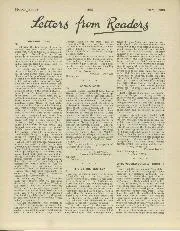
LANCIA CARS
LANCIA CARS Sir, Messrs. Lancia (England) Ltd., Lancia Works, Alperton, Wembley, have appointed Messrs. John S. Truscott Ltd. as their sole wholesale distributors for Lancia cars in Scotland. Wholesale inquiries…
It’s often claimed that the F1 regulations are so prescriptive they essentially define the car. But paradoxically that only makes the creative process even more important in making the difference between a fast car and an ostensibly similar-looking slow one. At the heart of every top F1 technical department is abstract creativity, regardless of how disciplined and tightly regulated the creation of the car might be. Just as an artist’s brain is forever making links – often sub-conscious – between apparently unconnected things, so do the best creative engineers.
Red Bull’s Adrian Newey remains F1’s pre-eminent creative force, regardless of the fact that he feeds into the team’s technical group that also comprises chief designer Rob Marshall, technical director Pierre Wache, chief of aero Dan Fallowes and chief engineer Paul Monaghan.
Last year Newey talked to us about how that creative process manifests in him. Some of it is in the genes, he believes. “I’ve been lucky in that my father had quite an analytical mind and my mother was quite artistic, and I seem to somehow to have inherited both traits.
“Sometimes you’ll be driving in the car and miss the junction because you’re dreaming away and on autopilot. It can be as simple as going to the loo for a pee, doing something mindless. A problem might have been bugging me for anywhere between five minutes and a month and suddenly a solution will pop up from nowhere. The subconscious brain is remarkable, silent processes that just keep churning away.”
But part of what keeps those ideas flowing is downtime. Red Bull’s technical department is structured around getting the best from Newey, freeing him from the grind as he sees fit. Wache explains how this works. “Adrian is the biggest asset of the team, especially as he is from a background of both aero and design. He has plenty of input but it is a big overview of, say, what philosophy of managing the airflow to have and whether there needs to be a change of concept. From there, the tools at our disposal and the tight regulations decide how the car will look.
“One big asset is that he is very open-minded. He picks up ideas that maybe haven’t been picked up elsewhere and tries to develop them. He can sit back and think and he is very good at anticipating issues that when you are younger you don’t see. He is so competitive. So yes, I am learning a lot from him.”